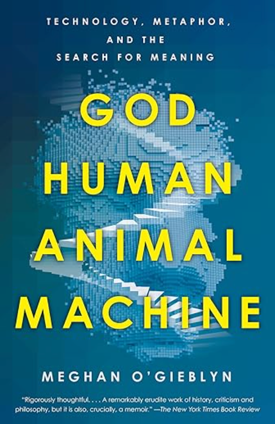Recording of AI Book Club discussion of Karen Hao's Empire of AI: Dreams and Nightmares in Sam Altman's OpenAI
Book club meeting recording
Here’s a recording of the discussion of Hao’s Empire of AI:
Audio only
If you just want the audio:
Listen here:
For more details about the book club and schedule, see AI Book Club: A human in the loop. Everyone is welcome to participate.
The notes and discussion questions doc provides some questions to help prime the discussion, but honestly we rarely follow the questions there.
For this club discussion, I prepared a NotebookLM notebook, which compiles around 20 sources This notebook has a lot of sources compiled and various video overviews generated from the sources. I added a variety of sources to try to balance out the arguments and also look more carefully at the empire comparisons.
Book review post
For my take on the book, see my book review in this post: Book review of Empire of AI: Dreams and nightmares in Sam Altman’s AI, by Karen Hao.
Topics discussed
The following are topics we discussed during the book club discussion. The points were AI-generated from the transcript.
- The “empire” argument: The discussion centered on the book’s main thesis that AI companies, like empires of old, are built on a model of resource extraction and labor exploitation from vulnerable populations.
- Human and environmental costs: Participants were moved by the book’s on-the-ground reporting, focusing on specific examples like exploited data labelers in Kenya and the depletion of water resources for cooling data centers.
- The “fruit of the poisoned tree” dilemma: A major topic was the moral conflict of using AI, knowing its development has caused harm. This was a central struggle for members, especially those in the nonprofit and corporate tech sectors.
- A needed critical perspective: The group agreed that the book provides a valuable and rare critical viewpoint in a media landscape saturated with AI hype, acting as a “pebble on the scale” against the pro-AI narrative.
- Sam Altman’s controversial portrayal: Members discussed the book’s characterization of Sam Altman as a manipulative leader who personifies the ethically questionable, “win-at-all-costs” culture of Silicon Valley.
- Internal conflicts at OpenAI: The podcast covered the book’s inside look at the ideological battles within OpenAI, specifically the clash between AI accelerationists (“Boomers”) and safety advocates (“Doomers”).
- The inevitability of compromise: The group debated whether ethical AI development is possible at scale, noting that even companies with good intentions (like early OpenAI and Anthropic) seem forced to compromise their ideals to secure the necessary capital and computing power.
- Alternative paths for AI: The final chapter of the book sparked a conversation about the viability of smaller-scale, community-based AI projects as a more ethical alternative to the dominant, centralized model.
- The “vexed” position of tech workers: Participants shared personal feelings of being in a “compromised” or “vexed” position, required to use AI in their careers despite their ethical reservations about its origins and impact.
- AI literacy as a form of advocacy: A key takeaway was that despite the ethical issues, developing a deep understanding of AI is crucial. Literacy allows one to participate in the conversation and advocate for better, more responsible systems rather than being left behind.
Transcript summary
The following is a AI-generated, detailed summary of the discussion. If you want the literal transcript, you can view it from the YouTube video page. (Expand the description and click the Transcript button near the end.) Here’s the summary:
Overall impressions and key themes
The group found Karen Hao’s Empire of AI to be a powerful, well-researched, and compelling book. Participants agreed it was a challenging but worthwhile read, particularly for those working in the tech industry, as it raises significant moral and ethical conflicts. The discussion centered on several key themes: the human and environmental costs of AI development, the ethical dilemma of using AI, the characterization of Sam Altman, and the possibility of alternative, more ethical paths for AI.
The “Empire” Argument: human and environmental costs
A central topic of discussion was the book’s core argument that AI companies, particularly OpenAI, are following a colonial model of resource extraction and labor exploitation.1
-
On-the-ground reporting: Members were particularly struck by Hao’s detailed, on-the-ground reporting. The personal stories of exploited workers in Global South countries (like Kenya) and the environmental damage (such as communities left with brown water after selling their clean water to cool data centers) were described as “harrowing” and “heart-touching.”2 \
- A familiar pattern: One participant, speaking from the perspective of someone from the Global South, noted that while the stories were hurtful, the pattern of exploitation is not new. They drew a parallel between the low-paid, essential work of trash collectors in the industrial age and the underpaid data labelers who are fundamental to the AI revolution but bear the brunt of its negative consequences.
- Lack of balance?: While appreciating the focus on these issues, some members noted the book’s strong critical stance and looked for counterarguments. However, the consensus was that Hao’s deep dive into the negative externalities of AI provided a necessary and often-missing perspective in the broader conversation.
The dilemma: “fruit of the poisoned tree”
The book sparked a significant debate about the ethics of using AI, a concept one member framed as consuming the “fruit of the poisoned tree.”
- Author’s stance: The group discussed Karen Hao’s personal position on AI. In a podcast, she distinguished between predictive AI and generative AI, which she largely avoids because of its “dark origin.” Some members wondered if the book would have been more balanced if Hao were more of a “believer” in AGI’s potential, while others argued that her critical stance was a valuable “pebble on the scale” in a field dominated by hype.
- Navigating the conflict: A member who consults for nonprofits on AI integration shared that this is a major concern for her clients. Her approach is to acknowledge the ethical issues head-on while arguing that building AI literacy—even by using the tools—is essential to advocate for better systems. She emphasized that AI is already embedded in many technologies and “is not going away.”
- A compromised position: Participants working in the corporate world felt they had little choice but to learn and use AI, as it is becoming a required job skill. They described feeling they are in a “compromised” or “vexed” position, caught between the demands of their jobs and the ethical issues raised by the book. One member noted that the more you learn about AI, the more complex and vexing the issue becomes, moving beyond a “cartoon version” of good or evil.
Alternative paths for AI
The book’s final chapter, which presents a vision for smaller-scale, community-focused AI projects, was met with a mix of optimism and skepticism.
- Inspiring examples: The example of a Māori community using AI to preserve their language was seen as a powerful counter-narrative to the “big tech” model. It demonstrated that technology is not on an inevitable, single trajectory and can be developed in a more grounded, ethical way.
- The problem of scale: However, other members were more skeptical. They pointed out that OpenAI itself started with altruistic ideals but was forced to compromise to secure the immense capital and computing power needed for large-scale AI. This “race to the bottom” precedent, set by the first movers, makes it difficult for any company, including safety-focused ones like Anthropic, to follow a different path without falling behind.
Sam Altman’s portrayal and internal conflicts
The book’s depiction of Sam Altman and the internal power struggles at OpenAI was a major point of interest.
- A stand-In for Silicon Valley: The group debated whether the portrayal of Altman—as a charming manipulator who tells people what they want to hear while eliminating opponents—was fair or if he was being used as a larger symbol for the deceptive culture of Silicon Valley.
- The “Boomers vs. Doomers” dichotomy: Members found the book’s description of the internal conflict between AI accelerationists (“Boomers”) and safety advocates (“Doomers”) to be illuminating. The drama surrounding Altman’s firing and the subsequent employee realization that the board may have been right felt like a “thriller.”
- The weight of leadership: The discussion highlighted that the leader’s character becomes critically important when the technology in question, like AGI, is compared to the atomic bomb. Ilya Sutskever’s departure was seen as a conviction that Altman was not the right person to hold the reins of such a powerful technology.3 The subsequent splintering of OpenAI’s original talent into new companies (Anthropic, Safe Superintelligence, Thinking Machines Lab) was noted as a significant outcome of these conflicts. \
Final takeaways and reflections
The book club concluded that Empire of AI is an essential read that provides a grounding and critical perspective. Participants appreciated the opportunity to read a book that challenges the utopian narrative and forces a confrontation with the complex realities of the AI industry. The discussion deepened their understanding of the moral conflicts inherent in their work and reinforced the importance of being informed and engaged in the conversation about AI’s future.
About Tom Johnson

I'm an API technical writer based in the Seattle area. On this blog, I write about topics related to technical writing and communication — such as software documentation, API documentation, AI, information architecture, content strategy, writing processes, plain language, tech comm careers, and more. Check out my API documentation course if you're looking for more info about documenting APIs. Or see my posts on AI and AI course section for more on the latest in AI and tech comm.
If you're a technical writer and want to keep on top of the latest trends in the tech comm, be sure to subscribe to email updates below. You can also learn more about me or contact me. Finally, note that the opinions I express on my blog are my own points of view, not that of my employer.




